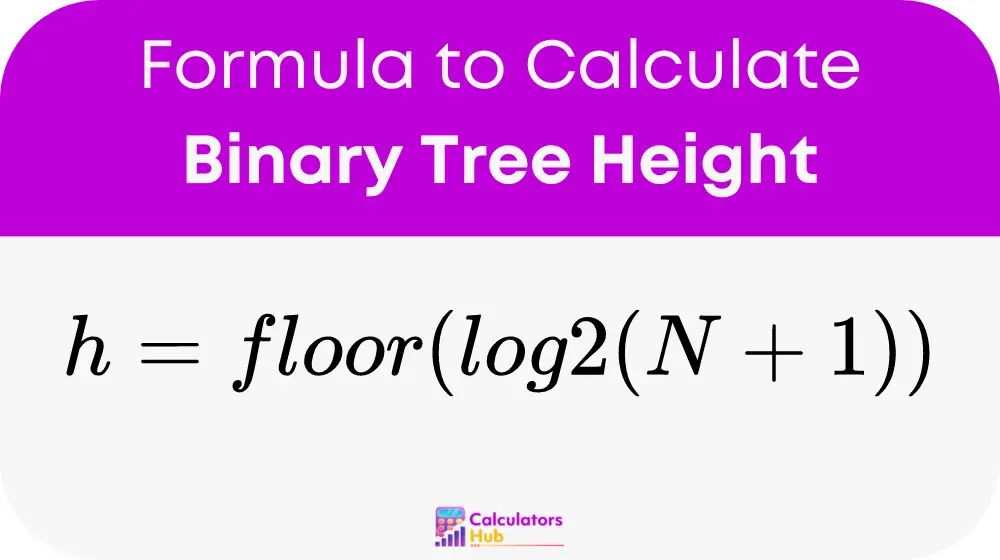This calculator simplifies the process of determining the height of a binary tree. The height of a tree is a measure of the longest path from the root node to the furthest leaf node. Accurately calculating this height is essential for performance tuning of algorithms and understanding the tree structure more profoundly.
Formula of Binary Tree Height Calculator
Height of the Tree

Explanation: The height of a binary tree with N nodes is efficiently calculated using this logarithmic formula. By taking the logarithm of N+1 and applying the floor function, we derive the maximum number of levels the tree can have. This formula ensures that even with a large number of nodes, the height can be computed swiftly and accurately.
Table of General Terms and Commonly Searched Conversions
| Number of Nodes (N) | Height (h) |
|---|---|
| 1 | 0 |
| 2 | 1 |
| 3 | 1 |
| 4 | 2 |
| 7 | 2 |
| 8 | 3 |
| 15 | 3 |
| 16 | 4 |
This table serves as a quick reference for users to understand how the number of nodes affects the tree height without performing calculations manually.
Example of Binary Tree Height Calculator
Consider a binary tree with 7 nodes. Using our formula:
- Calculate N+1: 7 + 1 = 8
- Apply the logarithm and floor function: h = floor(log2(8)) = 3
This binary tree's height is 3, which means it extends over three levels.
Most Common FAQs
A1: The height of a binary tree impacts its operational efficiency, particularly in algorithms involving searches, insertions, and deletions.
A2: Yes, this tool is versatile and can be use for any binary tree, including binary search trees and balanced binary trees.
A3: No, the calculator can handle any number of nodes, making it suitable for both small educational projects and large-scale applications.